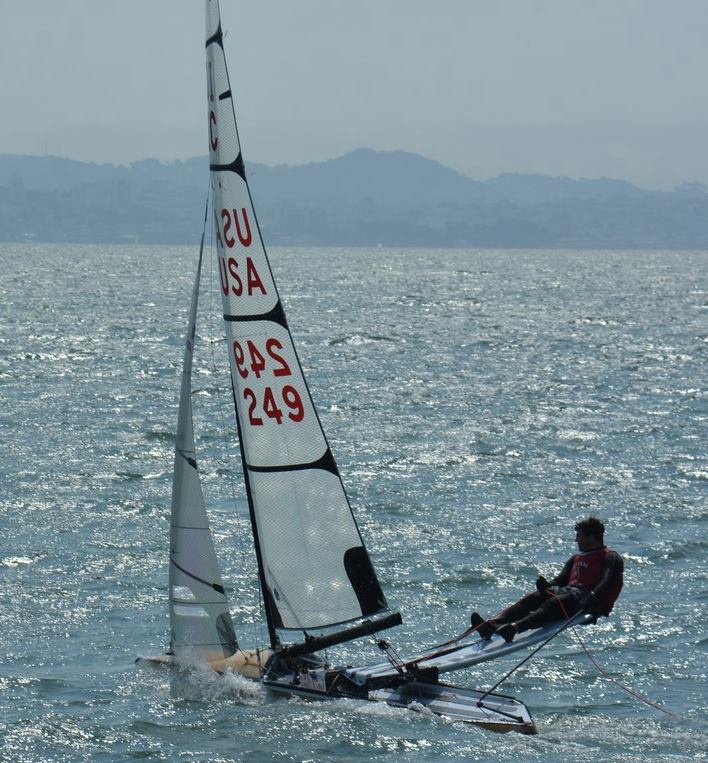About
The International Canoe is noteworthy in a number of ways.
It is one of the oldest international sailing classes. In 1934, the American Canoe Association and the Royal Canoe Club agreed to a set of international rules which permitted international competition to a common specification. Canoe sailing on both sides of the Atlantic had been well established for over 50 years, and some of the trophies the class awards are among the oldest in amateur sports. So in sailing an International Canoe, one is participating in an activity with a long and illustrious history.
The class remains active internationally and in the United States today, racing for a World Championship once every three years, a National Championship every season, and a North American Championship once every three seasons proceeding the Worlds. While one of the older classes in the world, it remains among the fastest and most challenging single handed monohulls in existence.
IC at a Glance
- Length 17 Feet
- Beam 750 mm
- Sail Area 10sq Meters
- Displacement 50 kg

The International Canoe is also aesthetically pleasing. The combination of long narrow hull, high aspect sail plan and sliding seat gives the boat an appeal that is irresistible to many sailors. The excess has all been trimmed away, and there is little that is not speed producing, which gives the boat a purposeful profile. The class is a development class, this aesthetic is always refreshing itself. So while the class is historic, it is also current or avant-garde. Perhaps as a result of this, International Canoes are built by the best craftsmen of their generation and many are show cases of fine state art of small boat building. It is rare for an IC to pass unnoticed.
Sailing the International Canoe is an experience like no other. Bill Kempner famously said, “Everything else is like kissing your sister.” The boat is fast, and demands a thorough knowledge of high performance sailing technique, but it is also exquisitely balanced and refined. The hull makes little fuss, the helm is light and sensitive, small changes in trim or body position translate immediately, and the view from the end of the sliding seat is unforgettable. The canoe does not grant these favors cheaply, which makes it all more desirable.
Finally the International Canoe occupies a unique design space. At 17 feet, it is longer on the waterline than almost all sailing dinghies, yet it has to carry only one sailor. This makes its displacement length ratio the lowest of any small mono hull. Not only does this give the IC a high hull speed, but it also insures that the transition to planning is very smooth and easy. The narrow beam results in hulls that simply do not slow down when they encounter waves, this is more like a catamaran than a racing dinghy. Finally, the sliding seat, introduced to the international canoe by Paul Butler in 1886, is in fact far superior to trapezes and racks. The seat extends more than 5 feet beyond the weather rail, which allows the sailor to hike further outboard than he could with a trapeze with his feet on the gunwales. It provides the additional leverage that racks would provide without the additional spray and aero drag of the leeward rack. It is simply an elegant way to apply more sail force to a very easily driven hull. The boat that in many ways looks dainty, is actually pretty muscled up and a glutton for being driven hard.
